- DGK Viper 8.125 Deck Review: An Overall Good Board - April 20, 2022
- Best Skateboard Bearings Guide: All You Need Consider - January 27, 2022
- Most Famous Old School Skateboarders - January 27, 2022
If you are someone that has stumbled into the world of skateboarding recently. Or if you have retained a passing interest over the last few years, you may not be aware of how much skateboarding has evolved over a short space of time.
In this modern age of skateboarding, mega ramps, the X-Games, SLS, and social media have all been commonplace within the sport. However, even as far back as twenty-five years ago, we were only seeing these aspects of skating in their most primitive stages.
Go back even further than that and you have the founders of the sport in the 1960s and 1970s who were carving around empty, abandoned pools in Los Angeles and riding boards that didn’t even have a tail. It was essentially as close to surfing on land as you could possibly imagine.
What we are getting at here is that skating has come a long way and it’s thanks to these old skool skaters that we have this wonderful action sport.
So we thought it would be fitting to do a deep dive into the world of old skool skateboarding, give you a little history lesson and introduce you to some of the retro skaters of yesteryear who have popularised and revolutionised the art of skateboarding, moulding it into the global attraction it is today.
So without further delay, here is our guide to old skool skating and the skaters who made skateboarding what it is today.
What is An Old Skool Skater?
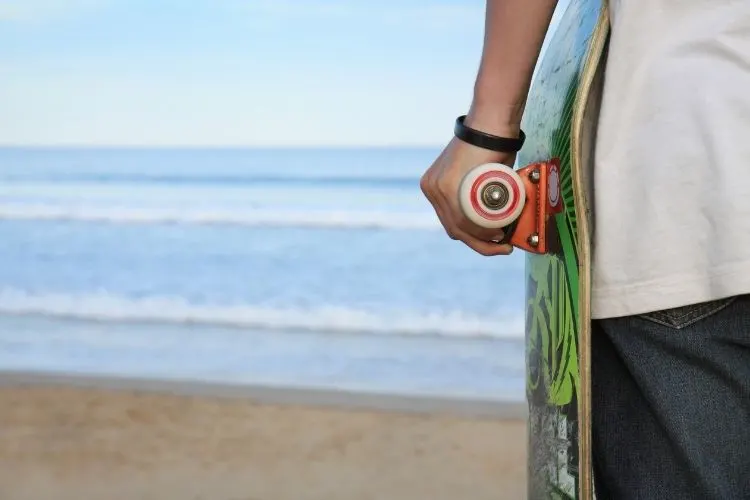
There have been a lot of lines drawn in the sand as to what particular generations qualify as old school skaters.
However, if we were going to throw our opinion out there, we would simply say that the old school skaters were the surfers in LA who couldn’t wait for the next swell, so they emptied out a pool in the suburbs and made their own.
These were the first old school skaters and they were the pioneers who essentially invented skateboarding. However, you don’t need to have been around in those days to be an old school skater. Old school skating is a style that is still prominent in skating to this day.
Old school skating is a style that mimics the movements and tricks that are common in surfing, only on concrete. Old school skaters will focus on power slides, Bert slides, riding ramps and doing sick airs, performing grinds and stalls, and generally just trying to carve up a bowl in the most mindblowing way possible.
We will admit, this style isn’t as commonly seen anymore thanks to the popularity of new-age skating and the push towards producing athletes rather than just talented skaters.
However, you’ll still find a couple of skaters who think the old way is still best and when you see the things that they can pull off on their huge boards with their chunky wheels, we reckon you’ll find it tough to argue against.
What Boards Did Skaters Skate Back Then?
Right up until the late eighties, boards were nowhere near as high-tech as they are now. Sure, they are all just planks of wood, but they are precision-engineered and made with performance in mind. In the old days, this was the last thing on skaters’ minds.
All these guys wanted to do was carve out a pool and get a sweet dose of adrenaline. So boards were very similar to surfboards back then. The skateboards of the 80’s era were wide to allow for carving and slides. Plus, they were made with just one tail.
The likes of nollie tricks simply didn’t exist back then, or any flip trick for that matter. The tail was used to get air out of the bowl and do wheelies as they were called back then.
The boards would occasionally have wider or skinnier truck setups depending on the skater and what they liked to do. If they were someone that liked to skate bowls exclusively, they would likely have a wide setup to avoid wheel bite.
However, if they liked to skate freestyle as well, they would probably go for a skinnier setup. Then as for wheels, these would usually be very chunky sitting at around 62mm and above.
This was to allow for huge slides and avoid flat spots. Plus, these skaters liked to bomb hills and skate rough terrain too, so the wheels would often be very hard as well.
Are Old Skool Skaters Responsible For Inventing Skating?
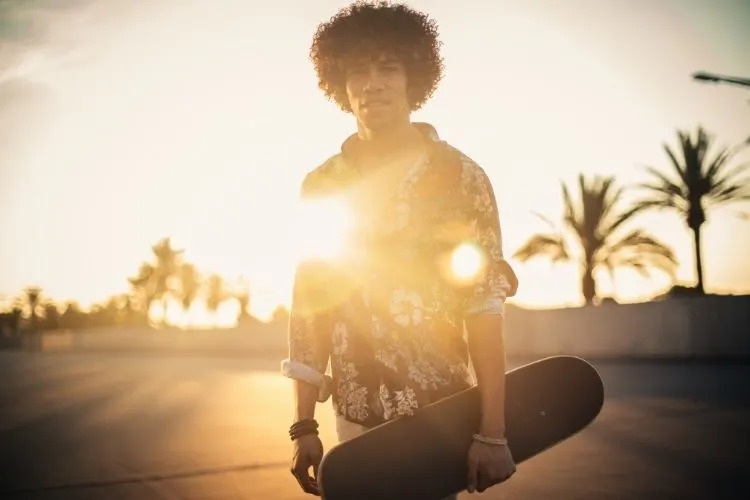
In a word, absolutely. We don’t think that you can tie it back to just one skater as so many old school skaters had a hand in creating this action sport. However, you can certainly tie it back to a certain era and a handful of influences.
There is an argument that the skateboard inventor Larry Stevenson should get the credit but quite frankly, without skateboarders, a skateboard is just a plank of wood.
The real inventors of the sport were those that took Stevenson’s invention of a board with a kicktail and created disciplines that would make up the primitive foundations for the sport.
Back in the mid-1960s, there were very few skaters around but there were some who would travel the country and perform demos, while others would compete in competitions. The two disciplines at the time were freestyle and slalom, which was essentially a downhill race through marked gates.
The best-known skaters at the time were names like Torger Johnson, Mark Richards, Woody Woodward, Patti Mcgee.
However, this era of skating was short-lived and by 1967, the scene was all but dead. So while come consider these important figures in the Genesis of skating, many would argue against these skaters being the true inventors of the sport.
Instead, many agree that the true founders of the sport were those that competed in the second wave in popularity that skateboarding enjoyed. This was the Zephyr Team made up of iconic surfer style skaters such as Stacey Peralta, Jay Adams and Tony Alva.
These skaters would put skating on the map, make skating competitions a common occurrence, would play a huge role in developing skate culture and bringing in monetary rewards to the sport of skating.
Thereby establishing skating as a respected sport. Plus, they would create the first recognised skateboarding tricks ever which we would now refer to as old school tricks.
What Were The Most Famous Brands of This Era?
It’s important to remember that skating in this era was chaotic. With the surge in popularity and the sudden push for gear that was made specifically for skateboarding. A lot of companies were trying to cash in and become the recognised brand for this up and coming sport.
This is probably why a lot of these brands haven’t been around for decades. However, back then there were a lot of popular brands which the pros would swear by. So we thought it would be cool to let you know what these brands were, why they were so popular, and if they still produce skating gear to this day. Check it out:
Cadillac Wheels
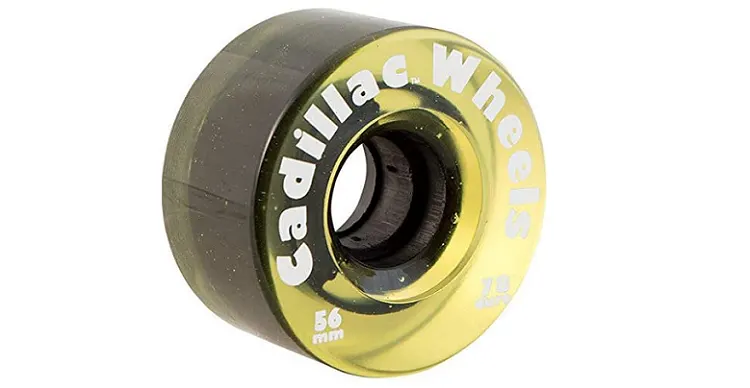
The most revolutionary of those were probably Cadillac Wheels. These were the first skateboard wheels that were made from pure polypropylene, allowing for more traction and control while skating and opening up new avenues for tricks.
Many actually credit Cadillac for the second wave of popularity that skating enjoyed. It was believed that thanks to some clever marketing and the huge leap in terms of quality when skating, this caused a boom in skateboard sales and allowed the sport to rise from the dead after the drop in popularity in the mid-sixties.
Cadillac still produce wheels to this day that are rock hard and best suited for longboards and cruiser boards. So if you want to cruise or carve out a bowl, it’s hard to argue with a company that’s been top of the pile for over forty years.
Powell Peralta
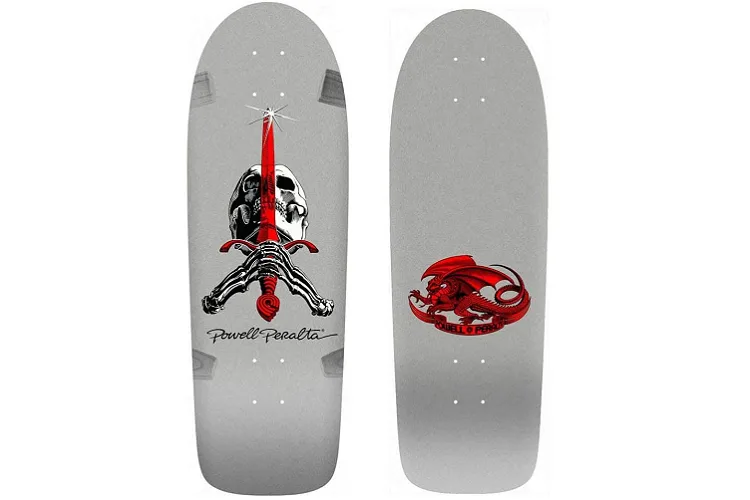
This is another brand that is still going strong to this day. This was a skateboard brand created by Stacey Peralta and George Powell which focused on creating maple plywood boards that not only oozed quality but also had stylish designs which helped the brand grow.
This would allow them to open up a dedicated shop, build a team of pros called the Bones Brigade and dominate the skateboarding world for the majority of the Eighties and nineties.
Powell Peralta originals are a rare commodity in 2021 but the company still produce decks, some of which are reissues of old classic designs and they still have some incredible skaters on their team such as Andy Anderson for example.
Vision
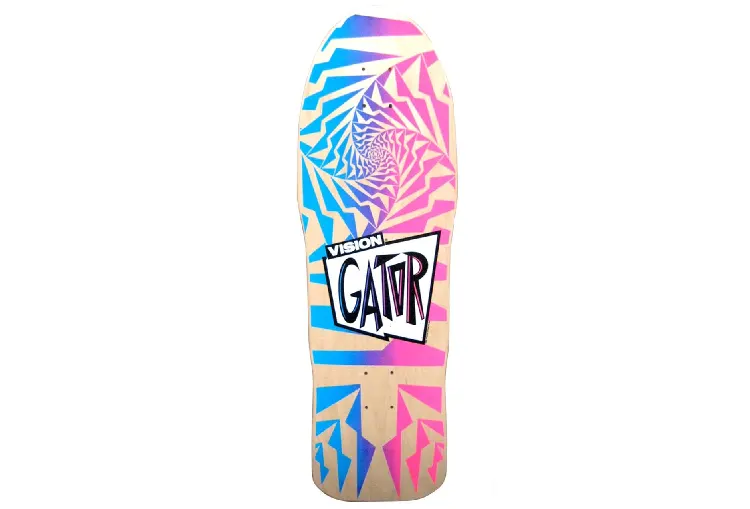
Vision was another iconic company within the old school era that produced a handful of boards that remain popular to this day. The company was created by Brad Dorfman in 1976 and with the help of pro skater Mark ‘The Gonz’ Gonzales, the brand would become one of the most popular names in the sport.
Vision would eventually fall apart when Gonzales went off to form Blind Skateboards. However, the company still exists in some form to this day under the same Vision Street Apparell which sell skating clothing as well as some reissues of popular decks such as the Psycho Stick.
Independent Trucks
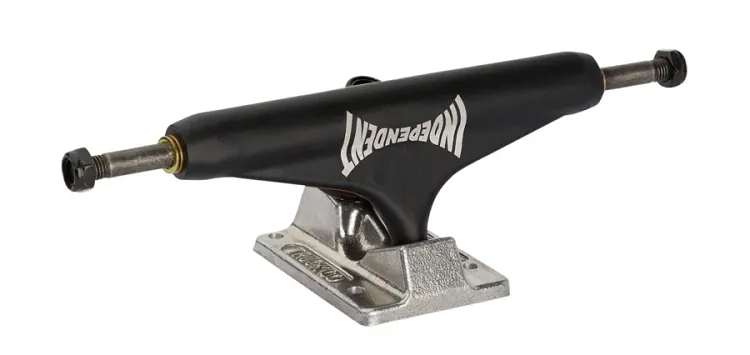
If you are looking for reliable skateboard trucks, you would be a fool to not put Independent Trucks at the top of your wishlist. These guys have been around since 1978 and have been killing the game ever since.
When they arrived on the scene, there were a few brands that were trying to produce trucks that were aimed specifically for skateboards.
However, it was the general consensus of skaters back then that there were no trucks that fit the bill. Tracker Trucks were the closest thing to a quality skateboard truck but when Independent arrived on the scene, no one else could compete.
Independent has since expanded their production and produce risers, bearings, clothing and many other things. However, they remain immensely popular for their durable trucks which come with a lifetime guarantee. If that isn’t confidence in your product, we really don’t know what is.
Bones Bearings
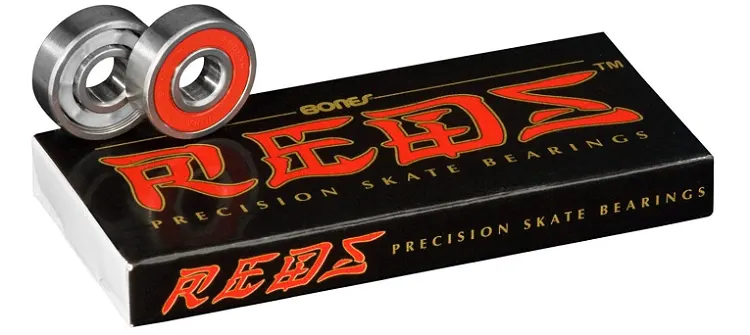
Back in the 1980s, good bearings were hard to come by. American companies like Fafnir had fallen away as the production costs were too much. Meaning that expensive imports from Japan and Germany were the norm, and even then, the bearings weren’t top-notch.
This led to George Powell peeling away from Powell Peralta to start Bones Bearings. He was able to source a little factory in Switzerland that made some of the fastest bearings around.
Since then, the company has been the market leader for skateboard bearings ever since, producing the iconic Bones Reds for over 40 years and also coming up with new and innovative options like Swiss ceramics.
Who Are The Most Famous Old Skool Skaters?
Now on to the meat of this article. We want to give you an extensive rundown on the old school skaters that shaped skateboarding. However, we better make you aware of the criteria to be considered an old school skater. Check it out:
- Must have been an active pro prior to 1990.
- Must have influenced skating significantly
- Skaters included cannot be exclusively new age skaters
- Must have been active for a decent period of time
Now that we have all the admin in order, let’s get into it. Here are our picks for the most influential old school skaters of all time:
Stacey Peralta
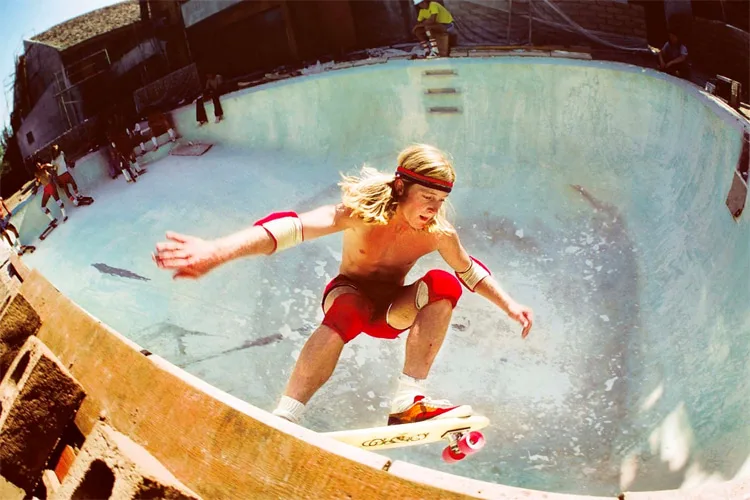
It’s hard to make an argument for a lot of the Z-boys to be on this list, simply because skating was in such a primitive skate back then. However, when it comes to Stacey Peralta, you simply can’t ignore what this man has done for skating.
He was the top-ranked pro skater of the 1960/1970’s era, he was influential for his star role within the Z-Boys and he also co-created Powell-Peralta which not only remains one of the most popular skate brands in the world to date.
It was also the brand that put together the Bones Brigade, a team that would take the baton and continue to revolutionise the sport. For all this and more, Stacey is a legend of skating.
Stacey now lives his life as a part-time movie director and managed to earn himself a coveted award at the Sundance Film Festival in 2001 for the documentary looking into the cultural effect that Dogtown had on skating as a whole.
Tony Alva
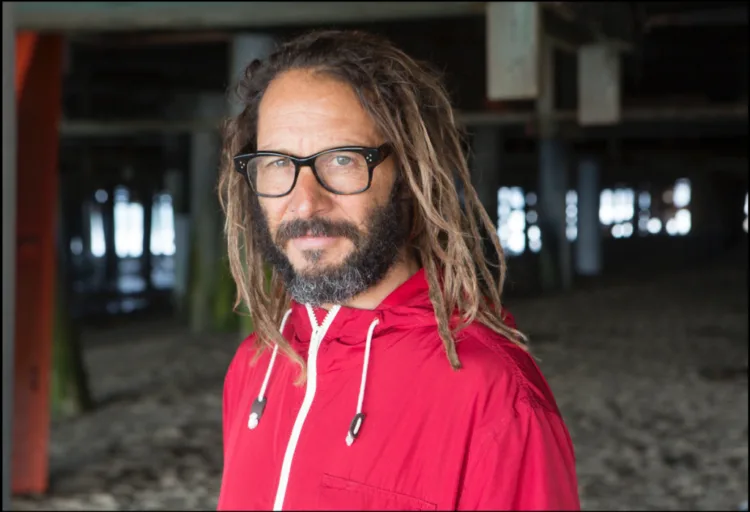
We move on to yet another Z-boys alum, this time the immortal Tony Alva. Much like Stacey, Tony arrived on the skating scene in the late sixties and managed to get signed as a pro in 1972.
He skated for the Z-boys in the Zephyr competition and brought along his aggressive style to the bowl, allowing him to be the first to land tricks like the Frontside Air and replicate a handful of tricks that you would have previously only seen if Venice Beach got a big swell.
Tony is still technically a pro skater to this day as he has been sponsored by Vans for the last thirty years. However, as he is pushing closer to seventy years old now, his appearances on a board are getting less and less common.
However, Tony is still active within the skating community and also, he is a huge music man, having played in bands like Skoundrelz, G.F.P, Junkyard, and Eyes With Fangs in the past.
Jay Adams
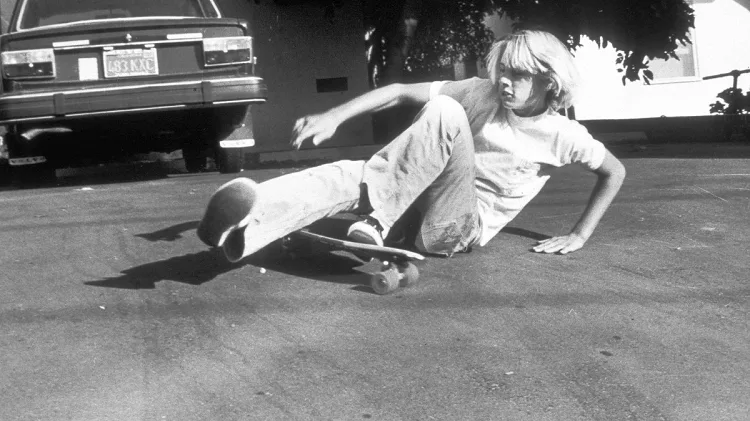
We move on to the late, great, Jay Adams. Jay was not the most talented skater of his generation, Stacey Peralta even said as much. However, he was one of the most fearless skaters of the era, capable of taking simple tricks and making them look like death-defying feats of nature.
Jay had a similar style to the rest of the Z-boys, using moves common within the surfing world to carve up empty swimming pools in the Los Angeles area.
It was Jay’s low body position, relaxed posture and fast-paced movement that won over the skating faithful and many believe that this style is responsible for the aggressive pursuit of perfection found in new age skating.
Jay Adams was sadly a troubled character who struggled with a drug addiction and would eventually succumb to his illness, dying from a drug-induced heart attack in 2014. However, he has since been inducted into the skating hall of fame and will be forever remembered as one of the pioneers for the sport skating.
Rodney Mullen

Next up, we have the grandfather of modern skateboarding, Mr. Rodney Mullen. Mullen wasn’t a vert skater or a skater that carved bowls, he was something of an outlier. Mullen began life as a freestyle skater and a very good one at that.
However, he would soon take the skills learned from freestyle skating and use those to create a wealth of flat-ground tricks that would essentially give birth to street skating. Mullen is responsible for creating kickflips, heelflips, tre-flips, impossible, and innumerable other flat-ground tricks.
When inquiring as to which skater invented a trick, it’s honestly quicker to assume that Rodney Mullen did, as in most cases, it’s the truth.
Rodney isn’t much of a skater anymore, often skating at night and alone if at all, but when you have done quite as much for the sport as he has, you can excuse his early retirement.
Rodney now spends his time partaking in public and motivational speaking engagements, enjoying classical music, and learning about more academic topics like Mathematics or Physics. Considering how he regularly used to defy physics, we would have thought there was little left to learn but the man is as humble as he seems.
Alan Gelfand
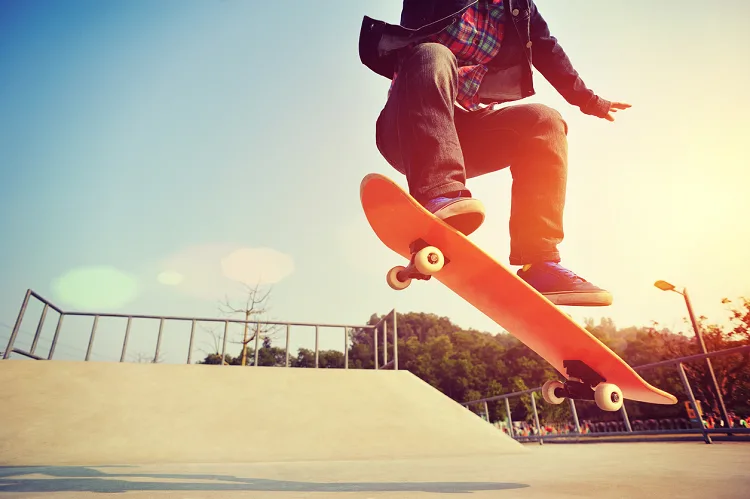
Alan Gelfand was by no means a prolific skater. However, he is one that will go down in the annals of history nonetheless. Alan back in 1977 gained a reputation within the LA skate scene for his ability to gain air off of a ramp without the use of any hands. A feat which up until this point was considered impossible.
So, since Alan was known to his friends as ‘Ollie’, the trick was coined the ollie-pop and later shortened to just an ollie. Alan would be recruited by Stacey Peralta for the Bones Brigade team mostly off the back of this iconic invention.
However, in 1981 Alan would hang up his trucks after consistent knee injuries made it near impossible to skate.
Ollie went on to be a very successful race car driver, specifically of German cars like VW’s, and is now the largest alternative provided of German Cars and SUVs in Hollywood.
Danny Way
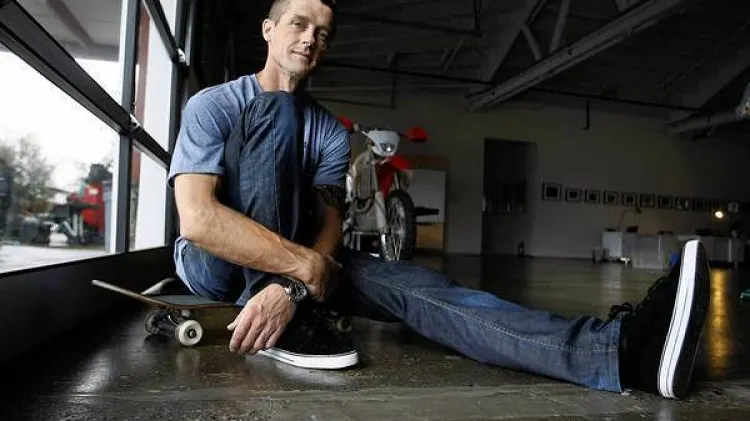
It’s hard to believe that Danny Way was a member of the Bones Brigade, considering the longevity of the man’s career but he absolutely earned his spot on the team.
He earned his pro status for his work in the Powell Peralta video, Public Domain, and went on to star in Hokus Pokus and Shackle Me Not before exiting to form his own board company, Plan B. Danny was one of the youngest skaters to ever win a vert contest and was also the first skater to rotate a 900.
However, Tony Hawk would be the first to land this trick famously.
What we are getting at here is that Danny was an incredible old school skater. However, Danny is better known for his influence on modern skating.
Danny has always been known to push the boundaries of skating and he has done this on an individual level by acid dropping from helicopters and jumping the Great Wall of China, breaking records in the process.
However, his introduction of the mega ramp to the X-Games competition format is perhaps the thing that will serve as Danny’s legacy in skating.
Mike Vallely
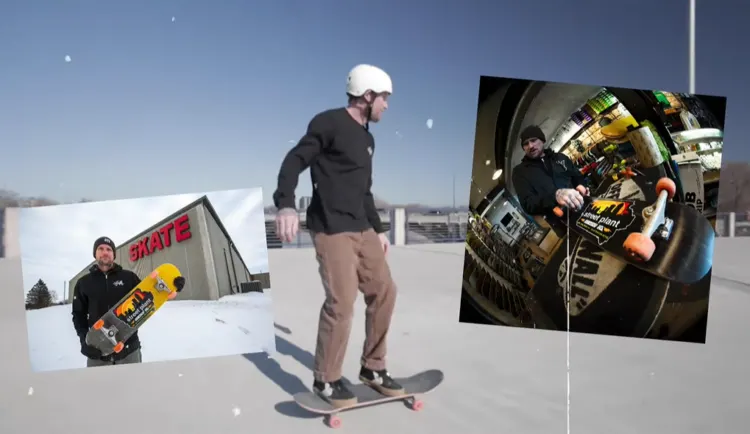
Now we have Mike Vallely, a man that would play an important role in popularising street skating. While vert was very much in vogue in the mid-1980s Vallely was out on the streets, skating fast, skating hard, shredding everything in sight, and doing so with a style that for the time, was fresh and unique.
Vallely always considered himself an outsider to the skateboarding world but the fans loved him regardless. He was the embodiment of a pro skater. Always turning up and giving his all in whatever conditions and first and foremost, he was a showman.
Vallely is still very much involved in the world of skating but no longer competes. Instead, he spends a lot of his time advocating for animal rights, appearing in the occasional movie such as The Hangover II and III, and fronting punk bands such as Black Flag.
Tony Hawk
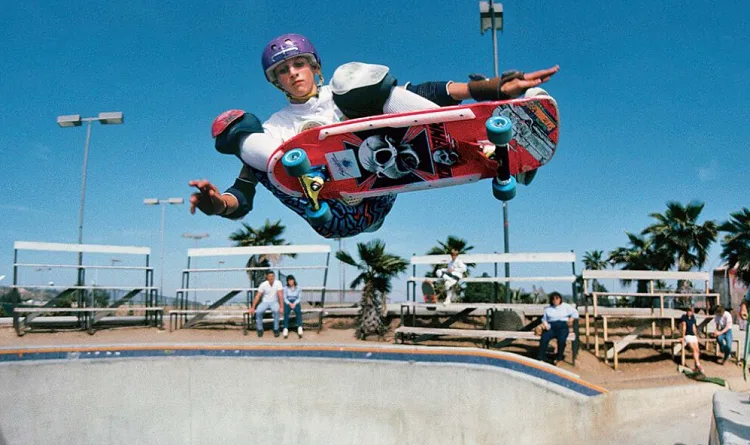
How could we go through this list without mentioning The Birdman? Tony Hawk has arguably done more for skating than anyone on the entire planet. Tony began life as a vert skater in an era where vert skating was as popular as it ever would be.
He was also signed on as a member of the Bones Brigade. Allowing the young man to do demo after demo, compete regularly and as a result, he bought his first home while still attending high school.
He would compete in a handful of X-Games, he would win countless events. However, it is what Tony did for Skateboarding culture that made him immortal.
In an era where Tony landed the 900 and cemented his place in skating history, he also released a video game series titled ‘Tony Hawk’s Pro Skater. This game was a phenomenon that pushed the popularity of skating into the stratosphere, birthing the next generation of skaters and allowing the sport to grow exponentially.
Then Tony would start his own foundation which helped build skate parks all over America. Tony would have a hand in creating 596 skateparks in the USA.
Tony Hawk continues to skate to this day recreationally, has produced Tony Hawks video games as recently as two years ago, runs his own skateboarding company, Birdhouse and generally does all he can to serve as a role model to young skaters all over the globe.
Lance Mountain
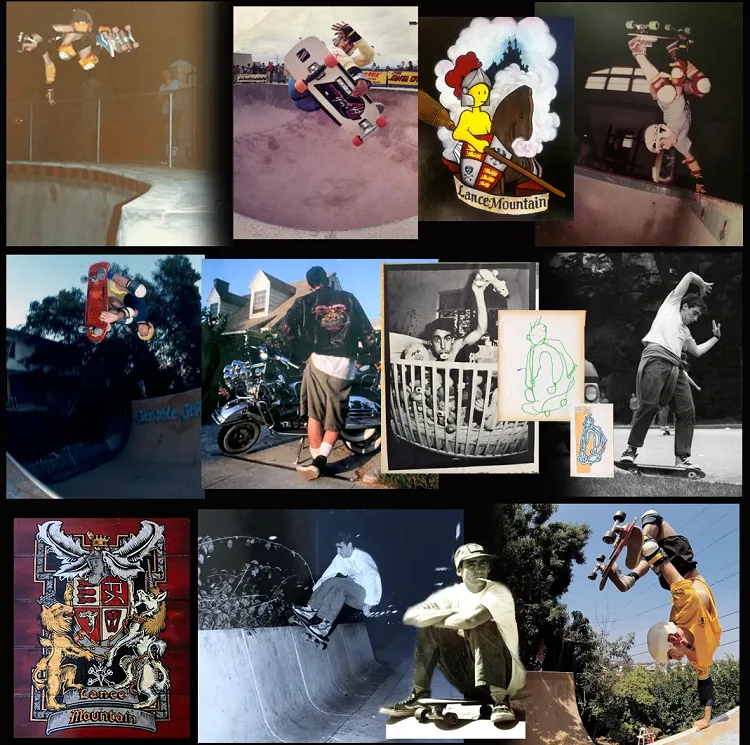
On to another member of the Bones Brigade, Lance Mountain. It can be easy to forget just how good of an all round skater that Lance Mountain was. He was a brilliant vert skater as all of the Bones Brigade crew was, but Lance was a handy freestyle skater too.
Throughout the eighties era, Lance was a very competitive pro who was able to win or place in most of the competitions he competed in, despite the likes of Tony Hawk and Steve Caballero entering the same events.
However, when vert skating gave way to the popularity of street skating at the turn of the millennium, Lance became less relevant within the skate scene.
Today he still skates at a professional level for Flip and continues to skate with the free flowing style that put him on the map some forty years ago.
The Bones Brigade members keep coming and this time, it’s Mike Mcgill. Mike was best known for his vert skating ability, placing in competitions from a young age all in a plea to keep travelling with Stacey’s crack team of vertical skating aficionados.
However, despite Mcgill’s professional prowess, he will go down in history as the man that created the McTwist. A 540 aerial with a mute grab which has become one of the common tricks used in competitive vert skating.
Mike called it a day on skating when street skating became all the rage. Instead deciding to jump into the industry side of the sport. McGill does still skate but mainly recreationally. However, he does do a little bit of stunt work.
A fun fact that many don’t know is that Mcgill was the stunt double for Mark Wahlberg in Daddy’s Home. If you have seen that scene, you’ll know that the man can still rip it up with the best of them.
Steve Caballero
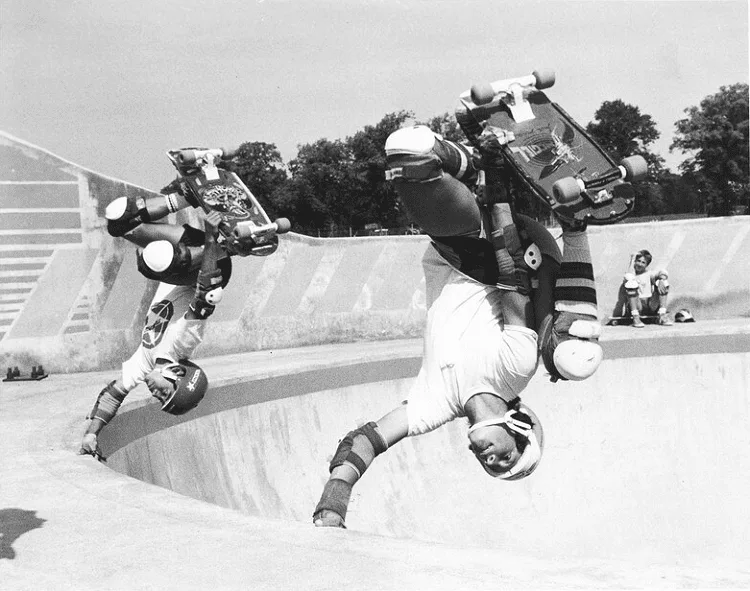
If you are looking for a skater that put vert skating on the map in a big way, you can’t overlook Steve Caballero. Steve was the skater pushing the boundaries within his era, always aiming to go higher and spin faster than any of his peers.
Steve once held the record for the highest air on a vert ramp before the high flying Danny Way really hit his stride. Plus, Caballero is known best for this invention of the Caballerial, a 360 aerial that sees the skater ride up the ramp and travel back down fakie.
Steve still skates and recently even took part in Tony Hawks Vert Alert where he did a demo with fellow icons, Tony Hawk and Christian Hosoi.
He even broke out a Caballerial for the fans. However, he is more interested in collecting vintage toys, comics, and cars these days. Plus, he’s been a member of various punk bands over the years and he has recently released a new album with his new outfit, Urethane.
Mark Gonzales
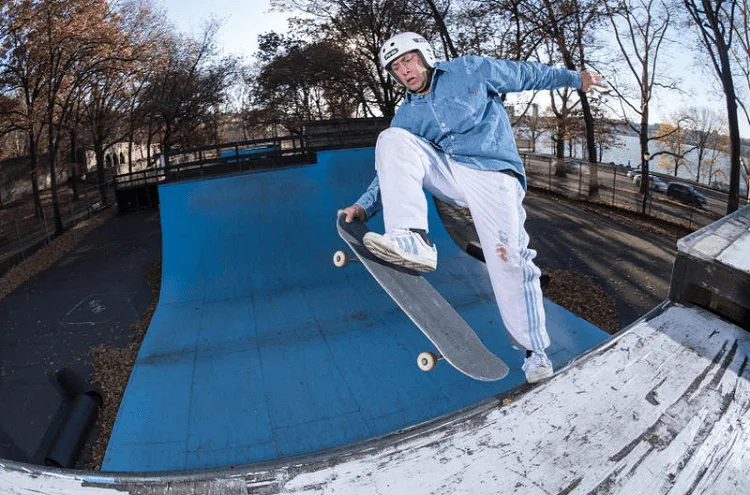
If Tony Hawk was the man that popularized vert skating, Mark ‘The Gonz’ Gonzalez was the man who popularised street skating. The Gonz put The Embarcadero on the map, claiming a famous gap as his own to be forever known as the Gonz Gap.
He was the man that normalised skating handrails, hitting huge gaps and drops. He saw skating as an art form and used every opportunity as a way to exude glee and wow those watching on.
He is also largely responsible for the success of Blind Skateboards and responsible for the way video parts have been recorded over the years.
Mark was awarded the Transworld ‘Most Influential Skater of all time’ award. Ahead of the likes of Christian Hosoi, Rodney Mullen, and Tony Hawk to name a few. Which goes some way to showing how much Mark has done for the sport.
These days he plays a role within skating similar to that of Stefan Janoski. He skates for fun but loves to produce art above all else. He’s a fun-loving enigma, his smile is contagious and he’s a legend of the sport.
Jason Lee
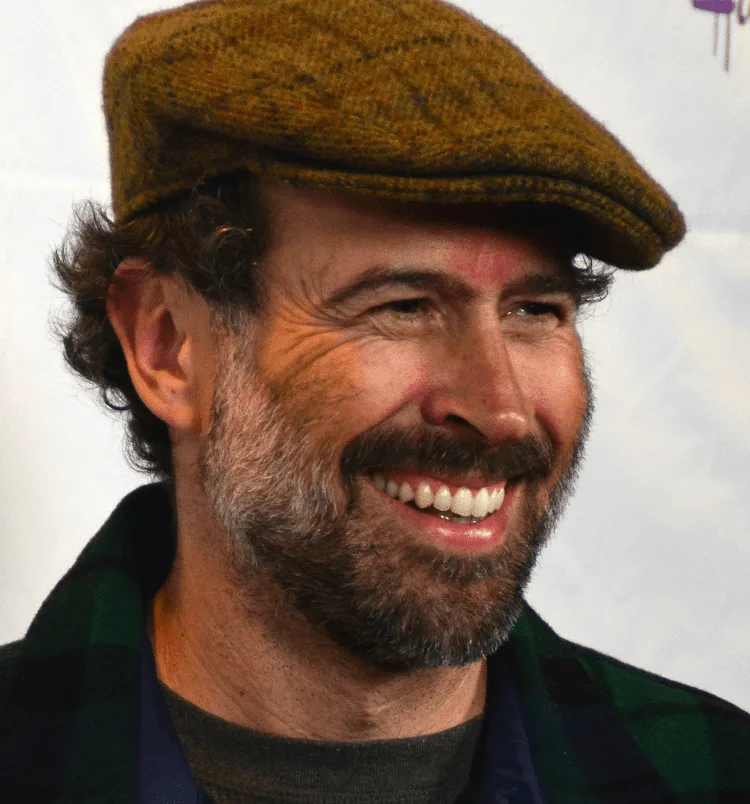
Wait, you mean the guy from ‘My Name is Earl’. Yeah, we absolutely do. Before his role in the popular sitcom, Jason was actually a very well known and respected pro skater. Lee was responsible along with Chris Pastras for founding Stereo Skateboards, which he still rides for on the ‘Classics’ team.
Video Days is the iconic part which perhaps showcases the talent that Jason Lee had. He more than matched the incredible Mark Gonzalez and was able to consistently land backside tails and 360 flips with ease.
In fact, Rodney Mullen may have created the Tre-flip but he credits Lee with making the trick as popular as it is today. He perfected the trick and is fondly remembered for his flawless style.
Jason turned his attention to acting after his skating career ended. However, he has remained within the skating world, appearing for events like Stand Up for Skateparks, dropping into The Berrics on occasion and he’s also appeared in both the Tony Hawks and Skate video game series. He’s also a very keen photographer in his spare time.
Natas Kaupas
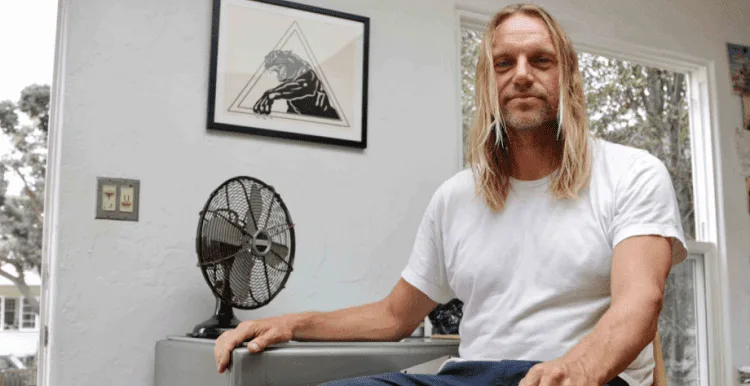
Now we have the enigmatic Lithuanian shredder who lived in Dogtown, Natas Kaupas. Natas, much like Mark Gonzalez, was responsible for popularising and revolutionising the world of street skating.
He was the first skater to attempt a boardslide down a handrail and had perhaps the highest ollie of anyone skating in this era, allowing Natas to stun the world with his insane gaps, hops, and drops. He was also responsible for creating the Natas spin.
A trick where he would ollie up onto a fire hydrant and do a 720-degree rotation. This was first seen in the video part, Streets on Fire. Natas was also the first skater to ever be offered a Pro shoe model sporting his own name.
Natas would move into the entrepreneurial side of skating in the 1990s and after a series of injuries, it became a rarity to see Kuapas on a board at all.
He became enamoured with art and graphic design, which has allowed him to work within the skateboarding world for entities like Big Brother magazine, Rage Magazine, Element Skateboards, and Quiksilver.
Christian Hosoi
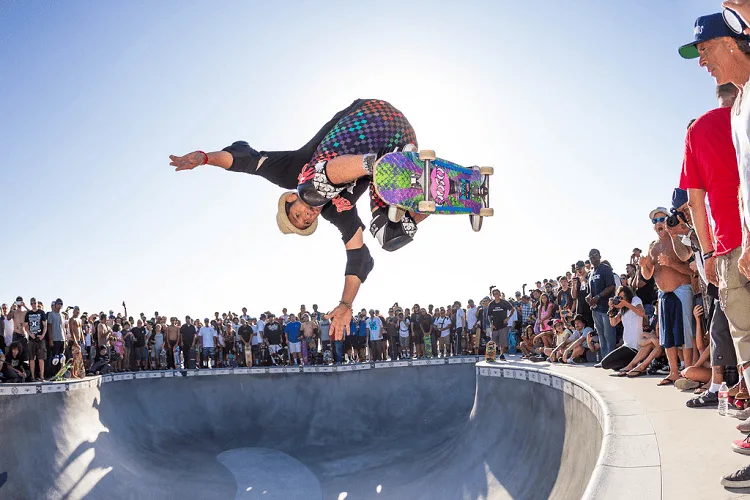
Then lastly, we have the incredible Christian Hosoi. Christian was an excellent vert skater who consistently challenged the likes of Hawk, Caballero and Mcgill, much to the bemusement of Stacey Peralta who refused to sign him as a pro for Powell Peralta due to his young age at the time.
He went on to ride for SIMS skateboards throughout this time and in 1984, he would create the trick, the Christ Air.
This is when the skater takes flight off the ramp, takes the board in one hand, extends the other arm, and the legs extend too, staying close together. It’s a move that’s a play on ‘Jesus on the cross’ and also a play on Christian’s name.
Life after skateboarding was not always easy for Christian and he struggled with a drug addiction for quite some time. However, thanks to the intervention of God, Christian has been able to turn a corner, become a family man and even restart his skating career. He’s even a fully accredited pastor.
Other Honorable Mentions
- Tommy Guerrero
- Mark ‘Gator’ Rogowski
- Peggy Oki
- Ed Templeton
- Elissa Steamer
- Daewon Song
FAQs Section
If you have reached the end of the article and you still need to know more, then maybe the FAQ section can provide. Check it out below:
Answer: Downtown is a specific area of Los Angeles known as Santa Monica. This term is derived from a name given to old huts made for miners in the area. However, this term is better known due to the success of the Z-boys and their famous video parts such as ‘The Lords of Dogtown’.
Answer: This is a subjective question as there are so many quintessentially old school tricks out there, so long as you have an old school style. However, even if you are a new age skater, there is one trick that helps bridge the divide.
The bertslide, at least in my humble opinion, is the best old school trick. This is when the skater approaches a bank or ramp, puts their hand down and pushes their feet forward while on the board, doing a power slide and then bringing the board back down the bank or ramp and riding off.
It’s a trick that is perfect for bowls, the streets or even slalom skating, making it the one old school trick every skater should learn.
Answer: While he might not compete anymore, or skate all that often for that matter. Tony Alva remains the oldest active professional skater at 65 years of age. Tony is still signed on as a pro for Vans: Off the Wall and we would imagine that it’s unlikely to change. Tony is an iconic name that you want to attach to your brand.
Stay in Skool!
As you can see from the information above, old school skating is still alive and well. This discipline and style of skating was the original way to shred and has shaped the way we skate, what we skate on and how we consume skating content.
We hope that our rundown through the annals of old school skating has been an education and we urge you to go through the history books and watch some old skate parts. We assure you, you won’t regret it.
Looking for more interesting readings? Check out:


